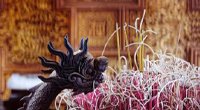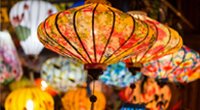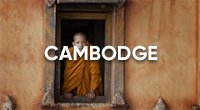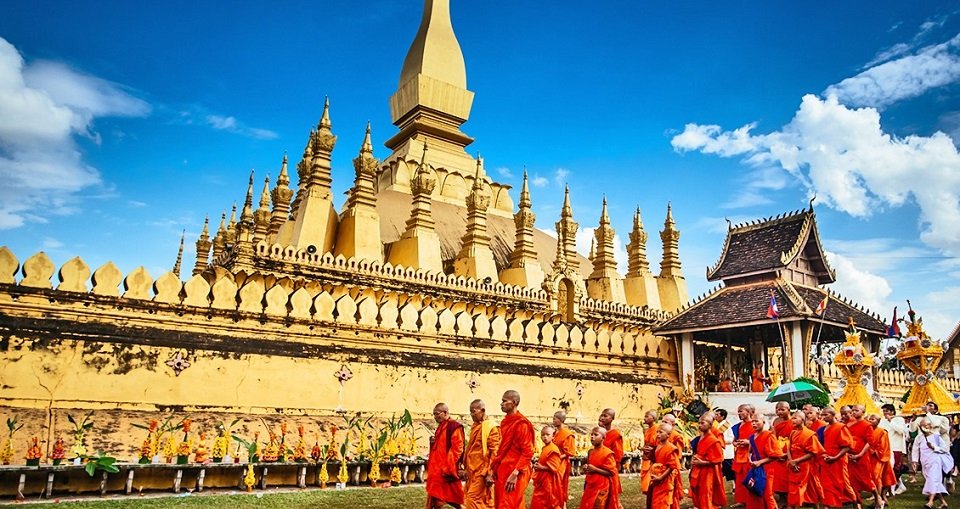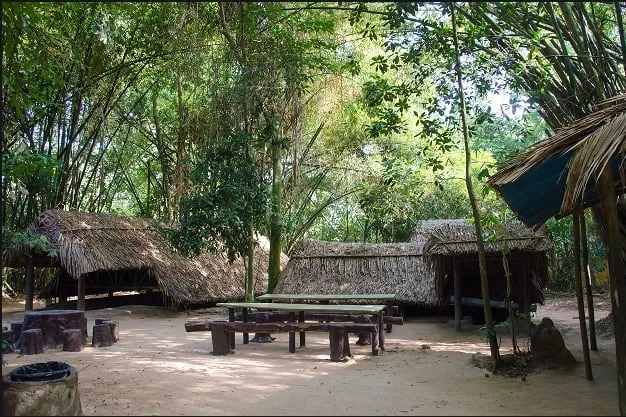Contents
ToggleHistory of That Luang Stupa
A National Symbol of Laos
That Luang (meaning “Great Stupa”) is the most important religious monument in Vientiane, the capital of Laos. Built in the 16th century by King Setthathirath, it became the spiritual heart of the nation when the Lan Xang Kingdom moved its capital from Luang Prabang to Vientiane.
With its gleaming golden dome and sacred relics, That Luang is more than a religious site—it’s a powerful national symbol of Lao identity and Buddhism.
Sacred Origins
The legend of That Luang begins in the year 236 of the Buddhist calendar. Five monks returned from India with a relic of the Buddha’s knee bone. They persuaded the local rulers of Muang Vientiane to construct a sanctuary to enshrine this sacred relic.
This original stupa marked That Luang as a holy site from the very beginning, cementing its place in the spiritual life of Laos.
Rebirth Under King Setthathirath
In 1563, after a victory over Burmese invaders, King Setthathirath moved the Lao capital to Vientiane and rebuilt That Luang on the ancient sanctuary’s ruins. It became the site of the royal court and a symbol of Lao unity, blending spiritual devotion with political power.
The iconic golden dome that now crowns That Luang was constructed during this era, and it still rises above the city today.
War, Destruction, and Restoration
That Luang suffered major damage during the Thai invasion of the 19th century. Despite the destruction, the structure’s core survived. In the years that followed, the Lao government undertook extensive restoration efforts, reviving the stupa’s splendor and returning it to its place as a center of worship and national pride.
What Lies Within
According to tradition, That Luang houses precious Buddhist relics, including a strand of the Buddha’s hair. Its intricate design is a masterpiece of Lao craftsmanship, created by exceptional artisans using traditional architectural techniques.
Today, it is one of the largest and most revered stupas in Laos—celebrated not only for its religious significance but also for its historical, cultural, artistic, and architectural value.
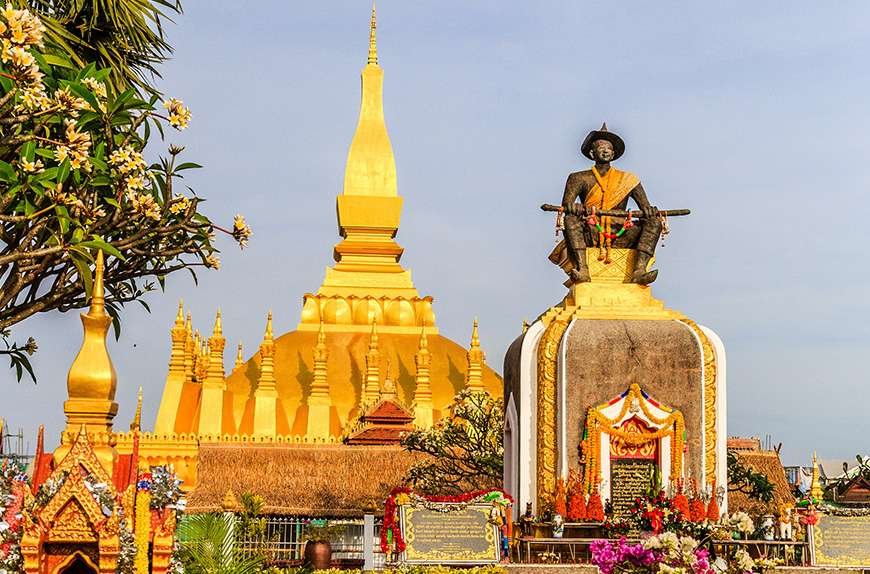
Symbolic Architecture of That Luang Stupa
A Masterpiece of Lao Design
The architecture of That Luang Stupa is not just visually stunning—it’s deeply symbolic, spiritual, and a true reflection of Lao cultural heritage. Every element of its design carries meaning rooted in Buddhism and traditional Lao beliefs.
The Lotus Base: A Symbol of Enlightenment
The base of the stupa resembles a blooming lotus flower, its golden petals spreading in all four directions. In Buddhist symbolism, the lotus represents purity, spiritual awakening, and the path to enlightenment. This foundation evokes harmony with the universe and spiritual growth for those who visit.
Golden Bodhi Leaves and 30 Stages of Practice
That Luang is adorned with over 332 golden Bodhi leaves, symbolizing the Bodhi tree under which the Buddha attained enlightenment. Surrounding the central stupa are 30 smaller towers, each representing one of the 30 stages of Buddhist spiritual development (known as Paramis).
Each mini-tower is inscribed with Buddhist teachings using ancient Balinese script, highlighting the stupa’s dual role as a sacred site and center of learning.
Sculptural Storytelling: Folktales in Art
One of the most captivating aspects of That Luang is its sculptural art, which decorates doors, columns, beams, ceilings, and window frames. These intricate carvings are often made from wood and inspired by traditional Lao folktales and literary epics passed down through generations.
You’ll find scenes from beloved stories like:
- Phutthapavat – the life of the Buddha
- Phavet (Vessantara Jataka) – a tale of ultimate generosity
- Sithon and Manola – a story of loyalty and love
- Phalac Pha Lam – featuring mythological creatures and moral lessons
These stories are brought to life through figures of humans, deities, and legendary animals, turning the temple into a gallery of Lao mythology.
A National Symbol in Stone and Gold
Beyond its spiritual role, That Luang holds a special place in Laos’s national identity. Its image appears on Lao banknotes, coins, and the official seal of the Lao People’s Democratic Republic, signifying its importance as a cultural icon.
Every tower, carving, and golden leaf reflects the soul of Laos—its faith, art, history, and unity.
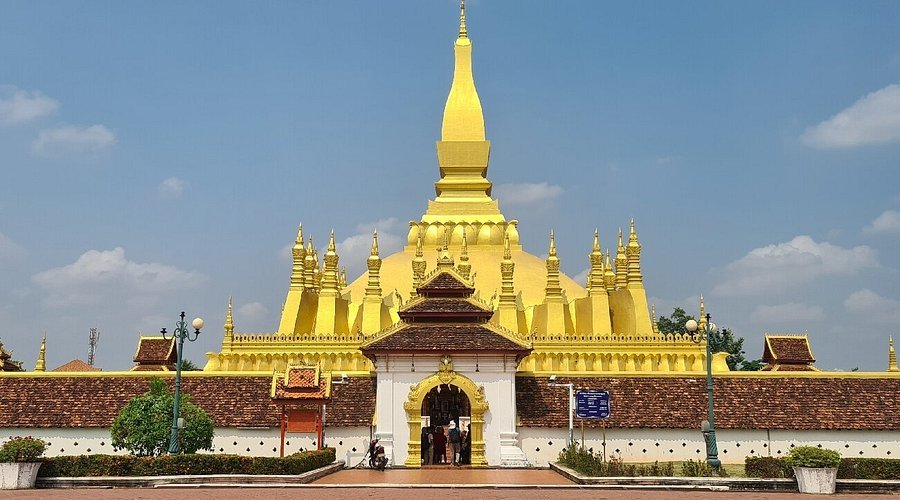
That Luang Festival – Laos’ Most Sacred and Joyful Celebration
That Luang Stupa is more than just an architectural wonder—it is a powerful symbol of Lao spirituality and national pride. Once a year, under the full moon of November, it becomes the heart of one of Laos’ most important festivals, drawing thousands of monks, pilgrims, and travelers for a vibrant three-day, three-night celebration.
Sacred Rituals and Deep Spiritual Meaning
The festival is anchored in Buddhist tradition, beginning with the Buddha bathing ceremony, a ritual of purification and renewal. Another highlight is the rice offering (tak bak)—where devotees present alms to hundreds of saffron-robed monks in a powerful act of gratitude and merit-making.
These rituals bring together people from across the country to pray for happiness, prosperity, and spiritual well-being. The atmosphere is reverent yet joyful, filled with a sense of unity and devotion.
A Cultural Celebration Beyond Religion
Beyond the sacred rites, That Luang Festival is a lively expression of Lao cultural identity. The temple grounds and nearby streets come alive with:
- Traditional music and dance performances
- Folk singing competitions
- Local food stalls and handicraft markets
- Sporting events, including the much-loved “Ti Khi”—a traditional Lao game resembling field hockey that always draws a passionate crowd.
The festival is a time for families and friends to gather, share meals, and reconnect with both their roots and each other.
Candlelight Procession – A Night to Remember
On the final night, the mood turns serene and deeply moving. Thousands of participants join a candlelight procession, walking slowly around the glowing golden stupa. Each person holds a lit candle, creating a sea of flickering lights that illuminates the sacred grounds in a breathtaking moment of collective peace and spiritual reflection.
It’s a powerful symbol: the light of the people feeding the eternal flame of That Luang—the flame of faith, hope, and cultural continuity.
A Festival That Captures the Soul of Laos
The That Luang Festival is more than an event—it’s a living reflection of what it means to be Lao. It celebrates faith, family, culture, generosity, and resilience. For visitors, it offers an unforgettable window into the heart of Lao life and identity.
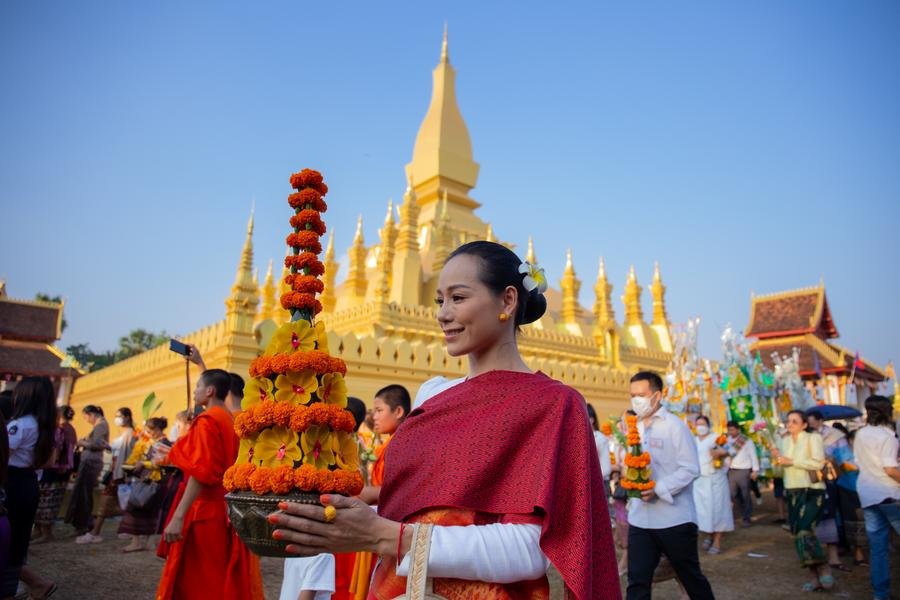
Places to Visit Near That Luang Stupa in Vientiane
After exploring the spiritual grandeur of That Luang, take time to discover more cultural gems just a short ride away. Here are four must-visit spots nearby:
🏛️ Patuxai (Victory Gate)
Often dubbed Laos’ Arc de Triomphe, Patuxai honors those who fought for the country’s independence from colonial rule. Climb to the top for breathtaking panoramic views of Vientiane’s tree-lined boulevards. The monument itself is richly decorated with Lao motifs and mythological creatures, blending French influence with local flair.
🏺 Lao National Museum
Located in the city center, this museum offers an insightful journey through Lao history, from prehistoric times to the modern socialist era. Explore exhibits on archaeology, ethnic traditions, war history, and cultural artifacts, making it an essential stop for understanding the nation’s heritage.
🛍️ Talat Sao (Morning Market)
Just a few blocks from the museum, this bustling market is perfect for souvenir hunting and local flavor. You’ll find:
- Handwoven silk and cotton textiles
- Silver jewelry and handicrafts
- Tropical fruits, snacks, and sticky rice treats
Whether you’re shopping or people-watching, Talat Sao offers an authentic glimpse into everyday Lao life.
🕍 Wat Si Saket
The oldest surviving temple in Vientiane, Wat Si Saket dates back to 1818 and features stunning Siamese-Lao architecture. Its peaceful cloisters house thousands of small Buddha images, and the faded interior murals offer a rare look into ancient Buddhist storytelling through art.
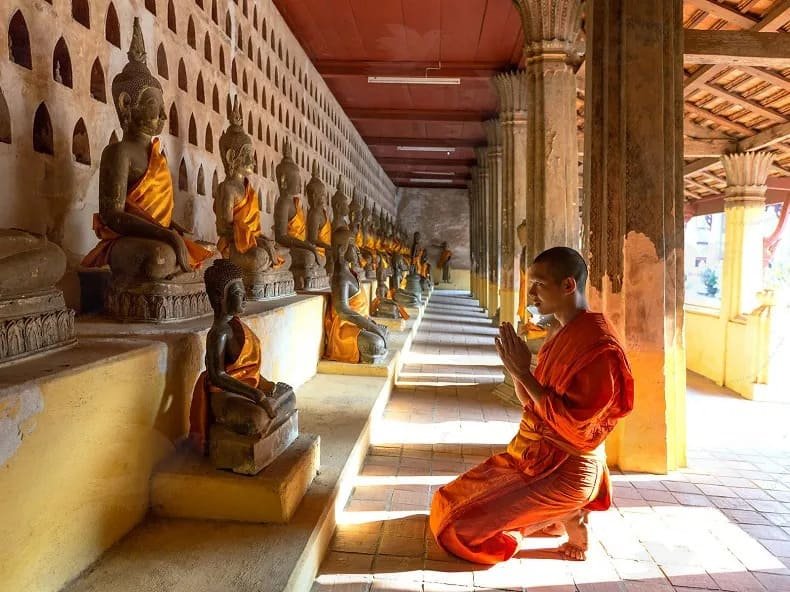
Final Words
In conclusion, That Luang Pagoda is far more than just a religious monument: it embodies the soul of Laos, blending history, culture, and spirituality. Its grand architecture, refined sculptures, and living traditions make it a symbol of the Lao people’s unity and faith. This sacred site attracts not only art and history enthusiasts but also invites every visitor to experience a unique journey marked by beauty, serenity, and deep respect for tradition.
A visit to That Luang offers a glimpse into the very essence of Lao culture—and an opportunity to explore the many other treasures surrounding the capital city of Vientiane.



